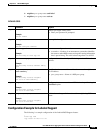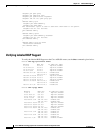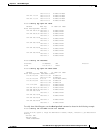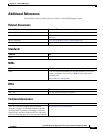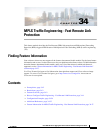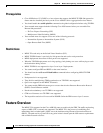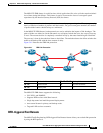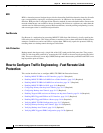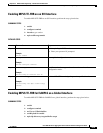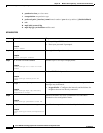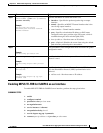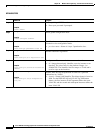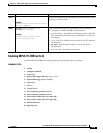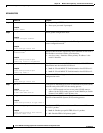
34-3
Cisco ASR 901 Series Aggregation Services Router Software Configuration Guide
OL-23826-09
Chapter 34 MPLS Traffic Engineering - Fast Reroute Link Protection
Feature Overview
The MPLS TE-FRR feature is useful for time critical applications like voice calls that require minimal
loss of data during link failures. This feature is used to overcome the issue of convergence speed
experienced by the Interior Gateway Protocol (IGP) fast timers.
Note The convergence numbers is the sum of detection time and re-programming time. The re-programming
time is a function of number of prefixes and label entries. For good convergence numbers, the number
of prefixes/label-entries should be kept to a minimum.
In the MPLS TE-FRR feature, backup tunnels are used to minimize the impact of link breakages. The
point of failure can either be a head-end tunnel or a mid-point. In both the cases, the scope of recovery
is local. The reroute decision is completely controlled locally by the router interfacing the failed link.
The recovery is done by the node that listens to the failure. The node that detects the failure switches the
traffic to the backup link with the least amount of delay.
Figure 34-1 illustrates the FRR link protection.
Figure 34-1 FRR Link Protection
The MPLS TE-FRR feature supports the following:
• IP, L3VPN, and EoMPLS.
• Supports BFD sessions with 50ms interval.
• Single hop tunnel and multi-hop tunnel deployments.
• Auto-tunnel feature in primary and backup nodes.
• Targeted LDP sessions on tunnels.
BFD-triggered Fast Reroute
The MPLS Traffic Engineering: BFD-triggered Fast Reroute feature allows you to obtain link protection
by using the BFD protocol.
334069
R8
R1
R9
R5
R2 R3
R6 R7
R2 Head-end of the tunnel R2 - R6 - R7 - R3 Backup link
R2 - R3 Protected link R3 Tail-end of tunnel
R2 - R3 Primary link — —



